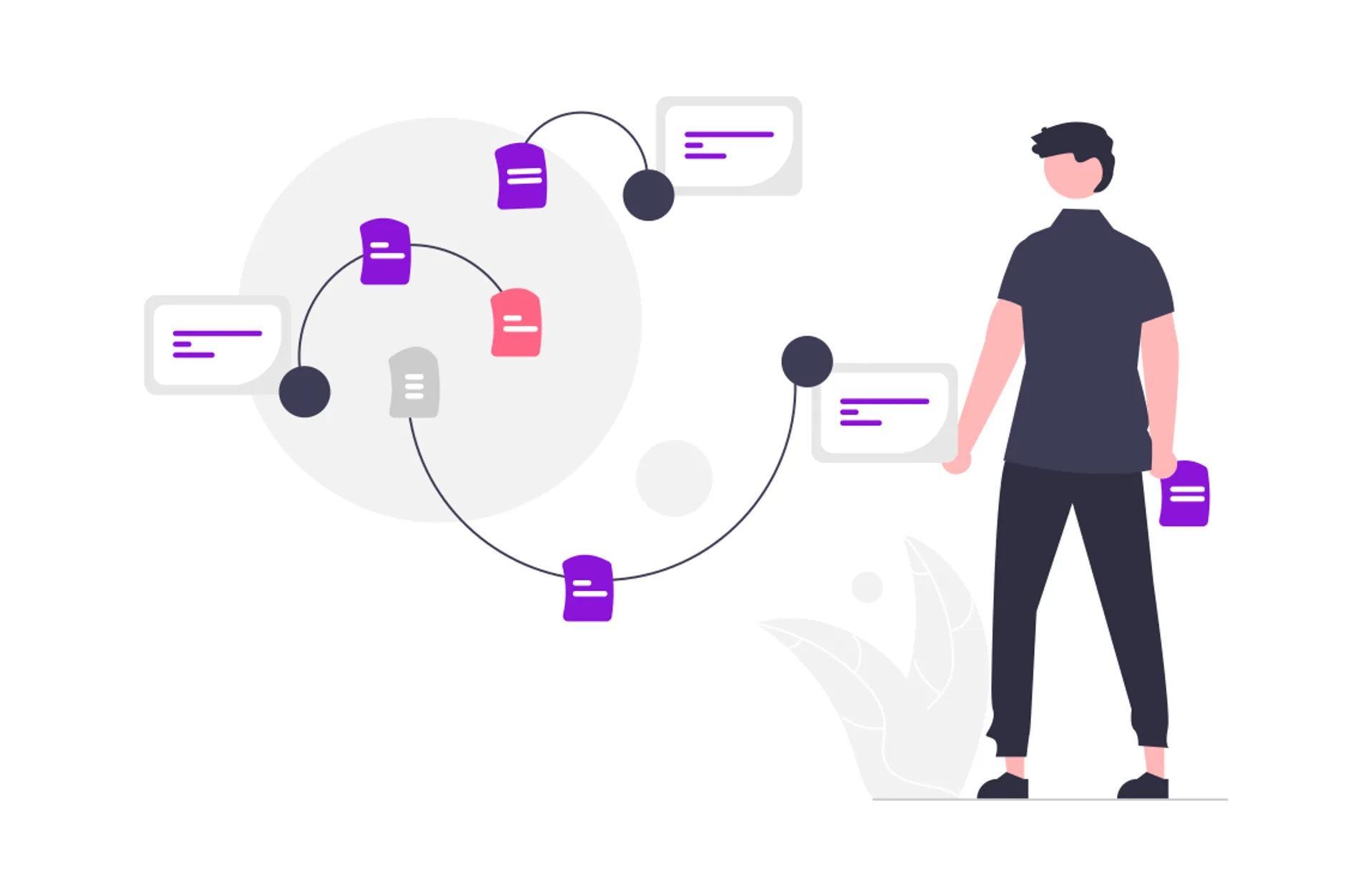What is Omnichannel Commerce?
Omnichannel commerce represents a cohesive and integrated retail approach that creates a seamless and uniform shopping experience across multiple customer touchpoints. These touchpoints span physical stores, websites, mobile applications, social media platforms, and other online and offline channels. The goal of omnichannel commerce is to ensure that customers experience continuity and consistency in their interactions with a brand, regardless of the platform or method they choose to shop with.
At its core, omnichannel commerce aims to eliminate friction throughout the customer journey. Whether a customer starts their journey on a smartphone, transitions to a physical store, interacts over social media, or completes a transaction through an online checkout, omnichannel strategies ensure that the experience remains smooth, intuitive, and personalized. This approach leverages the strengths of both physical retail spaces and digital shopping to address changing consumer expectations around convenience, personalization, and choice.
Omnichannel commerce is more than just technology or strategy—it reflects a commitment to delivering exceptional customer experiences and value across every touchpoint, meeting customers where and how they prefer to shop. By consolidating data from these varied interactions, businesses can gain deeper insights into customer behaviors and preferences, enabling them to predict trends, tailor marketing efforts, and refine operational strategies. Ultimately, this leads to not just customer satisfaction but also operational agility and efficiency for the business.
The strength of omnichannel commerce lies in its ability to connect these multiple channels into a single, smooth system. This connection allows brands to better understand customer journeys, predict purchasing preferences, and streamline operations to align with evolving consumer habits. It creates a frictionless customer journey while also fostering brand loyalty through personalized interactions, real-time engagement, and seamless service across all platforms.
Benefits of Omnichannel Commerce & The Problems it Solves
Better Customer Experience
Omnichannel commerce connects to customers wherever they are and switches seamlessly between channels. Customers may browse on a phone, add to their cart, and close the transaction in-store. Such an experience with less friction enhances customer satisfaction.
Better Collection of Data
Analyzing data from multiple touch points implies that businesses understand what their customers want and do. Richer data allows for more-personalized marketing, thus creating more intimate customer relationships and loyalty.

Increased Loyalty and Retention of Customers
Omnichannel strategy increases loyalty among customers because the shopping experience becomes more convenient and tailored. Channel integration without fragmentation also gives a brand flexibility in terms of the way the customers want to interact with it, hence increasing retention.
Operational Efficiency Enhancement
With the help of omnichannel commerce, inventory management, order processing, and customer care would all become streamlined. Retailers can have stocks in place without problems in different locations and create a robust and cohesive operation that easily transforms with shifting customer demands.
Improved Sales
Research indicates that multi-channel shoppers spend more than those who tend to shop through only one channel. Cross-channel interaction forces customers to spend more frequently and in higher quantities which means improved sales.

Omnichannel Commerce Implementation Strategy
Omnichannel commerce is about executing an orchestra of flawless strategy that aligns with business objectives and meets customer expectations. The following are some steps for this:
Customer Journey Mapping
Customer journey mapping is critical to the success of omnichannel commerce because it provides a comprehensive visualization of a customer's interactions across all touchpoints—both online and offline. It enables businesses to analyze and understand how customers engage with their brand at every stage of their journey, from initial awareness to purchase and beyond.
This helps businesses understand at which stages of the customer journey the customer's behavior and preferences change, so that they can optimize experiences and engage the customer on a deeper level. Customer journey mapping allows brands to track the path customers take through various channels and identify friction points or areas where their needs might not be fully met.
These stages map out how brands align messaging, technology, and services to customer needs at every touchpoint. It ensures customers get the right experience, convenience, and personalization whether they browse on a website, visit a store, use a mobile app, or track an order. A well-crafted customer journey map can help businesses design seamless yet personalized experiences that meet and even surpass customer expectations.
Systems and Channels Integration
All systems need to work together to give you a 360-degree view of every interaction that each customer has with your brand. For example, businesses can adequately run their operations and have stronger customer relations by linking CRM systems with point-of-sale systems and inventory management software.
Establish Balanced Messaging
Achieve a Single Consistent Brand Message. Omnichannel commerce is the only way to attain a single, consistent brand message and experience. Marketing materials, promotional messages, and customer service should all reflect the same voice and branding.
Data Analytics
Start using data analytics to understand what behavior your customers are exhibiting. With this data, you can personalize experiences, create targeted marketing campaigns, and use it to identify potential bottlenecks in the customer journey.
Inventory and Supply Chain Optimization
True real-time inventory visibility across all channels will help to ensure that there is never a stock out, yet not a lot of excess at the same time. Solutions that allow for centralized tracking of stock can do much to reduce inefficiency as well as speed up fulfillment.
Embracing Flexibility and Innovation
Omnichannel commerce is constantly in flux, and new tools and channels are unveiled frequently. Businesses must learn to adapt and innovate to continue to be competitive.
Technology and Software Requirements for Successful Implementation
The right technology stack has to be adopted to back up a strong omnichannel commerce strategy. The main software requirements are:
Customer Relationship Management (CRM) Systems
A robust CRM system allows businesses to track customer interactions, preferences, and purchase history across the board. It supports efforts at personalization and better service to customers by granting access to rich data about customers.
Point-of-Sale (POS) Integration
Modern POS should be online and offline connected to facilitate easy and seamless transactions. They allow BOPIS, pickups from stores for online orders besides returns in-store from orders bought online-the services that customers are demanding more.
Inventory and Order Management Software
Real-time tracking of inventory across all channels is one aspect of avoiding stock outs or selling more than what is available. Centralized order management also ensures that orders get filled up quickly to be delivered on schedule with minimum inconvenience caused to customers while reducing operational costs.
Data Analytics Platforms
Data analytics products aggregate and analyze data coming from different channels. This enables businesses to know where things are going right and where things need improvement-from marketing campaigns to optimizing inventory.
NovaDB Product Information Management (PIM)
Efficiently managing and centralizing product information across multiple channels is essential for retailers aiming to deliver seamless customer experiences. NovaDB Product Information Management (PIM) offers a robust, integrated solution for consolidating and organizing product data across all touchpoints. Designed to enhance scalability, accuracy, and speed, NovaDB PIM ensures that businesses maintain real-time inventory visibility, streamline operations, and enable dynamic content updates across channels.
With NovaDB PIM, retailers can efficiently manage vast amounts of product data while ensuring consistency and accuracy across every customer interaction—whether online, in-store, or via mobile platforms. Its intuitive structure allows for real-time updates on inventory, order status, and product details, empowering retailers to respond quickly to shifting demand and operational needs.
By leveraging NovaDB PIM, businesses can integrate data insights, strengthen omnichannel operations, and enhance the customer journey by ensuring product availability and transparency across all shopping touchpoints.
Key Challenges in Omnichannel Commerce and How to Overcome Them
System Integration
System integration from disparate systems, including POS, CRM, and eCommerce platforms, is often a challenge. This is less complicated using API-driven integrations or when working with providers that offer plug-and-play solutions.
Data Management and Analysis
Information from multiple channels can be very unmanageable if not kept straight. One such prime imperative is having a centralized data management system to collate customer information in real time and thereby prevent data silos.

Consistency Across Channels
Stringent control over messaging, price, and product information would ensure a seamless customer experience. Controlling messaging and mistakes with a CMS while automating frequent updates will maintain the integrity of the brand.
Customer Privacy and Data Security
Customer data is the lifeblood of an omnichannel strategy, hence the need for data privacy and security. It is, therefore, key for a retailer to adhere to all the stipulations of data and information management such as GDPR regulations and utilize secure systems that protect customer information.

Omnichannel vs. Unified Commerce
Omnichannel and unified commerce share a common goal: enhancing customer experiences across multiple sales channels. However, they differ significantly in their approach and execution.
Omnichannel Commerce:
- Focuses on integrating multiple sales and interaction channels like brick-and-mortar stores, websites, mobile apps, and social media.
- Aims to create a consistent and seamless customer experience across these channels.
- Allows customers to switch between different channels easily without disrupting their journey.
Unified Commerce:
- Centralizes all systems, data, and touchpoints into a single platform.
- Provides real-time visibility into customer interactions, inventory, order history, and transaction data across all channels.
- Enables faster, more efficient, and highly personalized customer experiences by integrating operations into one system.
Key Differences:
- Omnichannel enhances connectivity across different sales paths by focusing on creating a consistent journey.
- Unified Commerce offers a more comprehensive solution by integrating data and operations centrally, improving real-time insights and decision-making.
Omnichannel vs. Multichannel
Although the terms multichannel commerce and omnichannel commerce are often used interchangeably, they represent two distinct approaches to retail strategy. Understanding the difference is crucial for businesses aiming to optimize their customer experiences. Here's how they differ:
Integration Across Channels:
Multichannel: Each channel operates independently without coordinating customer data or inventory. For instance, online inventory and physical store inventory may not align.
Omnichannel: All channels are interconnected, creating a unified system. Inventory, customer data, and preferences are shared across all touchpoints, ensuring customers encounter no disruptions when moving between them.
Customer Experience:
Multichannel: Customers may face complications such as repeated information entry, mismatched inventory statuses, or limited visibility into their interactions across platforms.
Omnichannel: The shopping experience is seamless and personalized. Customers can switch channels without any inconsistencies (e.g., checking an item online and purchasing it in-store without difficulty).
Data Usage:
Multichannel: Data is isolated within each channel. Customer insights or behavior patterns across different channels are not shared.
Omnichannel: Data is aggregated into a single system, allowing businesses to gain a 360-degree view of customer behaviors and preferences, leading to improved personalization and engagement.
Operational Efficiency:
Multichannel: Inventory and order fulfillment systems may operate independently, leading to inefficiencies or stockouts.
Omnichannel: Systems are integrated, ensuring real-time inventory visibility and a more efficient, streamlined fulfillment process.
Future of Omnichannel Commerce
Omnichannel commerce is all set to change for the good with technology sitting in the middle. Some future trends are:
AI-Based Personalization
Omnichannel commerce is being made better by artificial intelligence because it will make things much more personal. Machine learning algorithms can analyze gigantic amounts of data to make personalized suggestions, offers, and interactions for each customer.
Voice commerce
Voice-activated assistants are booming and voice commerce might become an integrated part of the omnichannel strategies. Retailers can integrate voice search and shopping capabilities for a convenient, hands-free shopping experience.
AR and VR
AR and VR can be used to enhance customer experience through shopping. Customers can view a product before purchase is made. The use of this technology is already available with several retail powerhouses, who provide an immersive omnichannel shopping experience.
Adoption of Wearables is Increasing
With IoT, so much can be connected and retailers reach customers through new touchpoints like smart appliances. This will push the new frontiers of omnichannel commerce. Customers will have access to unique, integrated experiences.
Sustainability and Ethical Considerations
Future omnichannel strategies need to be sustainable in nature since the consumers are fast becoming more sensitive about environmental issues. The practice would be adopting activities such as an eco-friendly package, ethical sourcing, and in-store pickup as a simple way of reducing emissions linked with delivery.
Conclusion
In today’s technologically driven retail landscape, omnichannel commerce is no longer optional—it has become essential for businesses aiming to meet the expectations of modern customers. Consumers now expect flexible, seamless, and intuitive shopping experiences that connect both online and offline touchpoints. Omnichannel commerce is a proven strategy that allows brands to create these connected experiences by unifying customer interactions across all channels.
Adopting an omnichannel approach offers brands numerous advantages: it improves customer satisfaction, enhances loyalty, and builds long-lasting relationships by creating personalized, frictionless experiences. Moreover, through technologies like CRM, real-time inventory management, and POS systems, companies can gain visibility into customer behaviors and operational efficiencies. These tools make it easier to manage inventory, reduce stockouts, streamline fulfillment, and personalize customer journeys based on insights derived from customer data analytics.

Omnichannel strategies also prepare brands for future technological shifts such as AI, voice commerce, and augmented reality by creating agile frameworks capable of integrating these advancements without disrupting customer experiences. Retailers who commit to this strategy can lower operational costs, boost inventory management capabilities, and drive higher revenue through deeper customer engagement and loyalty.
The transformational potential of omnichannel commerce lies in its ability to connect every interaction a customer has with a brand, thereby creating opportunities to improve both experiences and operational performance. In a digital economy shaped by technological advancements and consumer expectations, investing in omnichannel commerce is an opportunity to stay competitive, innovative, and customer-focused.